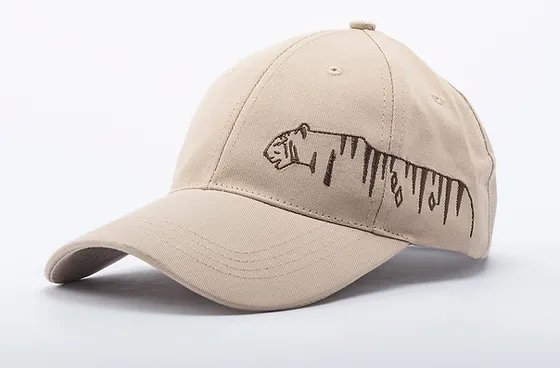In a world grappling with the pressing need for environmental conservation and sustainable development, one woman stands out as a beacon of hope for India’s marginalized communities. Savini Sonavaria, the driving force behind Pashoo Pakshee, is on a mission to create alternative livelihood models that empower communities while preserving the environment.
Her workshop at the Student Conference of Conservation Science, a remarkable blend of passion, practicality, and perseverance, offers valuable insights into the intricacies of community engagement and sustainable development. I delve into the heart of Sonavaria’s approach, exploring the key principles and profound lessons she imparts.
Design, Train, and Sustain: The Three Pillars of Change
The cornerstone of Sonavaria’s methodology can be summed up in three simple words: Design, Train, and Sustain. These principles form the foundation upon which her workshops and initiatives are built.
Design: The journey begins with thoughtful design. Sonavaria emphasizes the importance of tailoring each livelihood model to the unique needs and characteristics of the community it serves. No one-size-fits-all solutions here; instead, she believes in a customized approach that considers local resources, cultural nuances, and existing skills.
Train: Skill development is a crucial aspect of sustainable change. But Sonavaria recognizes that merely imparting technical skills is often insufficient. She asserts that behavioral change must precede skill training. For instance, in the case of fishing communities, asking them to reduce bycatch may seem futile initially. However, through patient education and demonstrating the benefits of sustainable fishing practices, a shift in mindset occurs gradually. This behavioral change is the linchpin of sustainable transformation.
Sustain: Building alternative livelihoods isn’t a quick fix. Sonavaria stresses that it takes time—5 to 7 years for behavioral change and up to 15 to 20 years for a full mindset shift within a community. Sustainable development, she asserts, is a marathon, not a sprint. Consistency in support and engagement is the key to ensuring that positive changes endure.
Tailoring Models to Communities

Sonavaria’s workshop underscores that a one-size-fits-all model is not the path to success. She firmly believes that it’s crucial to adapt the approach to suit the distinct characteristics of each community. For instance, a model for a caste-based community would significantly differ from one designed for a tribal community. The secret is to understand who shares the community’s landscape, identify local resources, and build skill sets that are closely aligned with these resources. This ensures that the model remains relevant and effective.
Leverage Local Resources
One of Sonavaria’s most profound insights is that sustainable livelihoods are often hidden in plain sight. She encourages communities to identify and utilize the resources they share their landscape with. These local resources become the foundation upon which new skill sets are built. By harnessing what nature provides, communities not only improve their economic prospects but also become stewards of their environment.
Teaching Communities to Teach Others
Sonavaria believes in empowering communities to become self-reliant. Rather than hand-holding, she advocates teaching them to pass on their newfound knowledge and skills to others within their community. This creates a multiplier effect, enabling knowledge and empowerment to spread organically.
Documenting for Posterity
In line with her commitment to sustainability, Sonavaria underscores the importance of documenting everything in the training process. This documentation ensures that lessons learned can be passed on to future generations, preventing the reinvention of the wheel and promoting continuous improvement.
Respecting and Acknowledging Culture
Irrespective of a community’s cultural practices, Sonavaria believes in approaching them with respect and empathy. She recognizes that cultural preservation is a vital component of community identity and seeks to align livelihood models with cultural values whenever possible.
From Aspiring Entrepreneurs to Leaders
Not everyone aspires to be an entrepreneur, and that’s perfectly fine. Sonavaria teaches communities not only how to create businesses but also how to become leaders within their own spheres. Leadership skills are a valuable asset for community development and sustainability.
Embracing the Impact Curve
Sonavaria emphasizes the need to embrace the impact curve, acknowledging that change does not happen overnight. Realistic expectations and a long-term perspective are essential to navigate the complexities of community-driven sustainable development.
Understanding the Rural Landscape
Lastly, to work effectively in rural communities, one must immerse oneself in the rural landscape. Sonavaria encourages those engaged in community development to understand the nuances of rural life, its challenges, and its opportunities.
Savini Sonavaria’s workshop on building alternative livelihood models with communities in India offers a profound and practical guide to sustainable development. Her approach, rooted in design, training, and sustainability, stands as a testament to the power of patient, community-driven change.
By respecting local culture, leveraging local resources, and fostering behavioral change, Sonavaria empowers communities to become the architects of their own sustainable futures. Her work serves as an inspiring example of how, with the right principles and unwavering dedication, we can build a better, more sustainable world for all.
https://www.goodhomes.co.in/home-decor/meet-pashoopakshee-the-indian-toymaker-creating-fun-intuitive-plaything-7634-2.html













